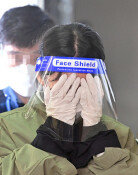KAIST research team develops a new disinfection technology
KAIST research team develops a new disinfection technology
Posted January. 24, 2018 08:12,
Updated January. 24, 2018 08:29
Korea Advanced Institute of Science and Technology (KAIST) researchers have developed a technology that can remove the biofilms stuck to the surface of foods, plastic bottles and pipes.
KAIST announced Tuesday that Professor Choi Won-ho from the Department of Physics and researchers Park Sang-hoo and Park Joo-yeong succeeded in developing a technology that can remove microorganisms (biofilms) on many different surfaces by using plasma, which is called “the fourth state of matter.”
Biofilms are a collective of bacteria and high-molecular substances including sugar adhered to the surfaces of foods, plastic bottles, inside food containers, or inside the pipes. Dental plaque is another example of biofilms.
Professor Choi and his team came up with the idea of removing biofilms using plasmas. Plasma is prone to chemical reaction and created by applying force to an object, dividing it into particles (electrons and ions) smaller than an atom. The research team applied plasma to water to create ions, such as ozone, hydroxyl radical, hydrogen peroxide and active oxygen that are very good at decomposing substances. Then, they immersed the bacterial biofilms in the ionized water and measured how much biofilms have been removed.
As a result, hydrogen peroxide, which is widely used as disinfectant, showed the highest effect of removing biofilms with 25 percent followed by ozone and nitrite ion with 11 percent and hydroxyl radical with 10 percent. In particular, hydroxyl radical, which is formed when hydrogen is removed from water molecule, showed great result considering that it was created only 0.01-1 percent of other ions.
ashilla@donga.com







